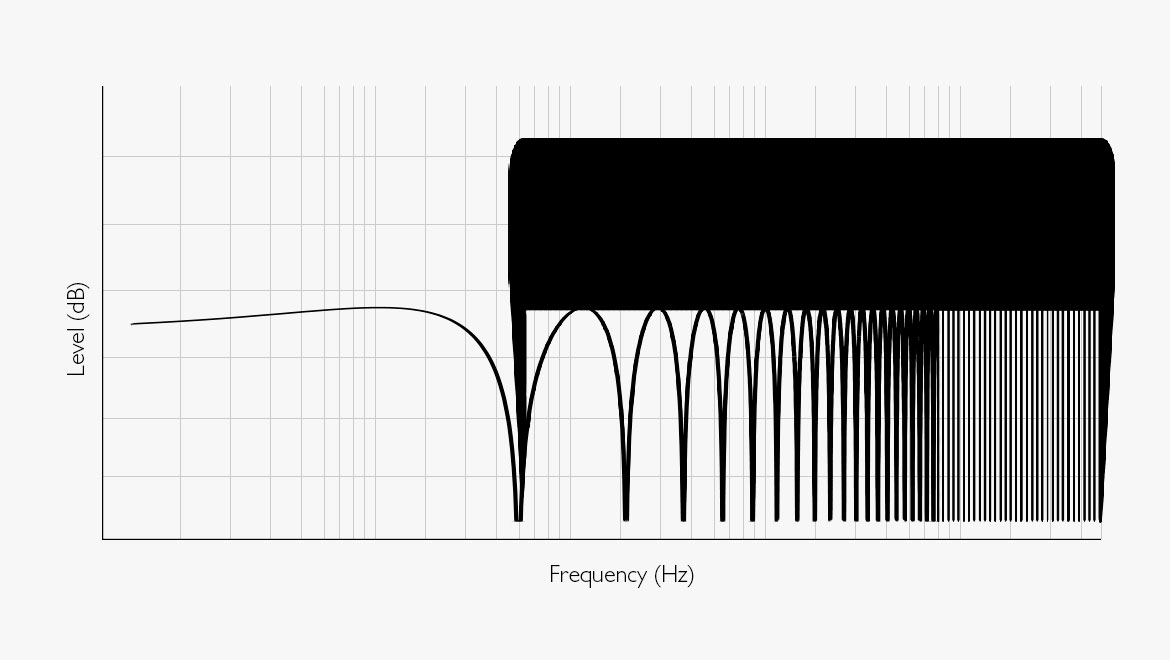jay mitchell
Shredder
- Messages
- 1,000
Me, too. If people won't accept the basics, it's very difficult to have a discussion of the finer points.Sweet baby Jesus.
Well... i tried.
Me, too. If people won't accept the basics, it's very difficult to have a discussion of the finer points.Sweet baby Jesus.
Well... i tried.

Then download Room EQ Wizard and acquire IRs of the device using a loopback of the sweep as the absolute time reference. That way, you're eliminating the RTL of the soundcard/computer/drivers from your measurement.What basics aren't people accepting? This is all a derail. I started the thread to measure latency.
There's nothing to "take up with DPA." Comb filtering is caused by arrival time differential, not latency. Note the word "differential." Two or more signal paths are required to create comb filtering, which occurs independent of latency. Similarly, interaural time differences ("ITD") come from arrival time differences of a single sound at each ear. Your ear/brain can detect and process ITDs of less than a millisecond. That's how you localize sounds laterally.Take it up with DPA.
How so??? At the very least, you're going to be getting AD/DA latency, which can be significant depending on the number of stages - it's usually quite negligible though. If you set REW up to use ASIO, then you're definitely going to have some amount of latency imparted by the ASIO driver, sample-rate and buffer settings.Then download Room EQ Wizard and acquire IRs of the device using a loopback of the sweep as the absolute time reference. That way, you're eliminating the RTL of the soundcard/computer/drivers from your measurement.
I have roomEQ wizard, this has nothing to do with anything I postedThen download Room EQ Wizard and acquire IRs of the device using a loopback of the sweep as the absolute time reference. That way, you're eliminating the RTL of the soundcard/computer/drivers from your measurement.
This has nothing to do with anything I said, I think you are thinking of someone elseThere's nothing to "take up with DPA." Comb filtering is caused by arrival time differential, not latency. Note the word "differential." Two or more signal paths are required to create comb filtering, which occurs independent of latency. Similarly, interaural time differences ("ITD") come from arrival time differences of a single sound at each ear. Your ear/brain can detect and process ITDs of less than a millisecond. That's how you localize sounds laterally.
This has nothing to do with anything I said, I think you are thinking of someone elseThe ability to hear multi-source interference ("comb filtering") is independent of your ability to detect latency.
Comb filtering can and does most definitely happen when two of the same signal arrive at different timesI agree with you entirely on comb filtering not being caused by 'latency' - it is the wrong word for it.
The word 'latency' isn't a catch all term for any time a signal doesn't arrive instantaneously.Comb filtering can and does most definitely happen when two of the same signal arrive at different times
I agree with you entirely on comb filtering not being caused by 'latency' - it is the wrong word for it.
Was someone saying it was? In the context of this thread's OP, round trip latency, it is certainly a term for a delayed signal. This is like 666 layers of pedantic hell, I don;t even understand what is going on hereThe word 'latency' isn't a catch all term for any time a signal doesn't arrive instantaneously.
Ok, someone is on my wavelength, thank you. @Sascha Franck do you have any idea what this rabbit hole they are going down is even about in the context of this thread? I'm genuinely totally confused by this obfuscationSo, if you record a singer, monitoring through headphones and he/she is complaining about "weird warbly FX" (or whatever they may say), in other words; comb filtering happening because of the misalignment of the signal heard through their skulls and their headphones, that comb filtering is *not* caused by latency in your book?
To be sure we're talking about the same thing, the procedure I cited is for measuring the latency due to an outboard device or system, not system RTL. The procedure cancels the effect of RTL. However, RTL is easily measured within a DAW using the same hookup.How so??? At the very least, you're going to be getting AD/DA latency,
Here lets at least agree that in this thread in this context we are talking about: https://en.wikipedia.org/wiki/Latency_(audio) which can and does cause comb filtering if there is a parallel path involved with a different latency (yes, air is a system)

